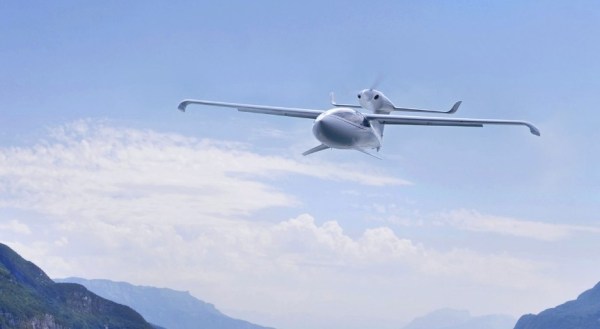
A new nomination for the Plane Talking PR clap trap Hall of Fame has presented itself in this release from the France’s LISA lifestyle changing light airplane project.
Headlined LISA Airplanes goes into receivership to succeed …. the release is in the same category as that of former Labor minister Laurie Brereton announcing in 1995 that work on Badgery’s Creek airport in Sydney was being suspended in order to fast track it, one of the greatest and most thoughtful moments in infrastructure oversight and delivery in the history of Australia.
(The Labor revisionist apologista version of events blames John Howard for refusing to build the airport in 1996. On the public record, Brereton suspended work to ‘fast track it’ a year earlier, and Howard refused to reinstate the funding, but did keep the site in order to future proof Sydney’s airport needs.)
While LISA won’t steal the crown, for those that savour the art of nuanced press manipulation here is the company’s full statement.
Following the American market’s great welcome for the AKOYA, and in order to achieve its financial plan, the Commercial Court of Chambery has accepted the request from LISA Airplanes’ founders to place the company in receivership.
Le Bourget du Lac, France, August 16th 2012 – LISA Airplanes was founded in 2004 with the ambition to design and market a revolutionary aircraft that would envision new pleasure aviation.
To reach this ambitious goal, LISA Airplanes was financed from 2005 on up to 80% by private funds (Business Angels, startup funds, investment funds).
In July, LISA Airplanes was finalising a fundraising bound to the commercial development of the company. The terms of negotiation anticipated a progressive and long term financing. As the selected investors were not able to fulfill their commitment, and the historical shareholders could not secure LISA Airplanes’ financial plan, the founders decided to place the company into receivership on July 30th in order to protect its future. This situation has no impact on our clients’ deposits, all of them being under a bank warranty. A 6-month phase of observation has been granted by the Commercial Court of Chambery.
During this period of transition, the team supports the managers to ensure a fast resumption of every activity. Indeed, the great response of the American market during the first presentation of the AKOYA at the Oshkosh AirVenture 2012 show, and the AKOYA’s extraordinary performance confirmed by more than one year of flight tests of the first preseries aircraft, create investment opportunities during the observation phase.
With the coming financing plan, LISA Airplanes and its partners will be able to launch the AKOYA worldwide, expected by this new market of pleasure aviation.
The company’s actual brochure description of the Akoya is predicated on the sky going dark with light aircraft you keep in your garage and fly from short sections of road that are, or soon will be, devoid of above ground power lines.
LISA Airplanes – a French company with international ambitions established in 2004 – creates, produces and distributes top of the range airplanes, products and services that are centered on Man and his mobility with the intention of creating a new aviation which suggests a change in lifestyle. From this philosophy, a first aircraft is born – The AKOYA.
The AKOYA is a two-seater amphibious airplane with a unique design and a wealth of features. From ground, water or snow, the AKOYA takes its passengers 1250 miles away (2000km) thanks to its impressive fuel efficiency of 42MPG (5,6L/100km) and can reach the speed of 135 knots (250km/h). After a pleasant and quick flight, the AKOYA lands on a less than 650-feet field (200m) and fold its wings to be parked in a garage. To reach these performances with no compromises, LISA Airplanes has designed an exclusive innovation in the aviation field which allows landing on multiple surfaces. The Multi-Access technology is a unique combination of two hydrofoils, a retractable landing gear equipped with skis and folding wings.
If you have been following the news for 50 years or more you might be aware that less artistically rendered versions of suburban car-plane projects have been hyped at the rate of about two every decade.
Funding issues aside, why have these projects all come to nothing?
There are two reasons, one regulatory, and one technical.
On the regulatory side the dangers of millions of people mixing it with each other and other more conventional aircraft was always abundantly obvious, and every single developed jurisdiction declared at the outset that the same standards of training and competency that the rules require for aviators in general would apply to compulsorily licensed car-plane pilots.
On the technical side, folding wings and multi-surface undercarriage alternatives add to the weight and complexity of more straightforward designs, and because you can’t add weight and complexity without compromising performance, the designs resulted in aircraft that failed to deliver on promises, and were often subject to severe or catastrophic control issues at low speeds or when the centre of gravity shifted with a change of mass and control surface manipulation in the course of a flight.
There is, for those reasons, nothing as simple as a car with wings.







Crikey is committed to hosting lively discussions. Help us keep the conversation useful, interesting and welcoming. We aim to publish comments quickly in the interest of promoting robust conversation, but we’re a small team and we deploy filters to protect against legal risk. Occasionally your comment may be held up while we review, but we’re working as fast as we can to keep the conversation rolling.
The Crikey comment section is members-only content. Please subscribe to leave a comment.
The Crikey comment section is members-only content. Please login to leave a comment.